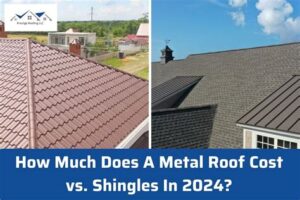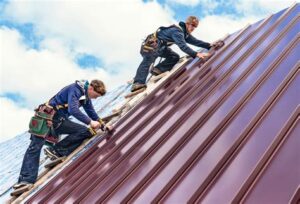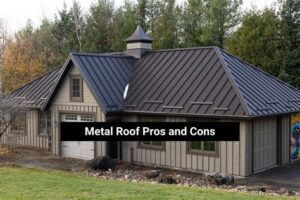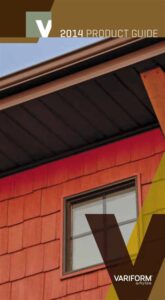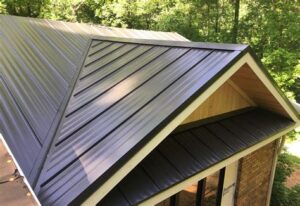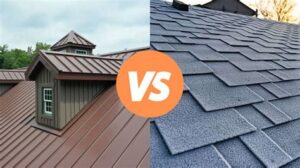A Complete Guide To Blue Metal Roof Costs And Benefits
Are you considering upgrading your roof to a blue metal option? This complete guide is designed to illuminate the costs and benefits associated with blue metal roofing, helping you make an informed decision for your home. Metal roofs have gained popularity due to their durability, aesthetic appeal, and energy efficiency, but it’s essential to understand how these advantages translate into costs. Throughout this article, we’ll explore the various factors that influence pricing, provide a detailed breakdown of installation expenses, and highlight the long-term benefits of choosing blue metal roofing. Additionally, we’ll compare it with other roofing options to give you a comprehensive perspective. Whether you’re building a new home or renovating your existing one, this guide will equip you with the knowledge you need to invest wisely in your roofing solution.
Understanding Blue Metal Roof Costs: An Overview
When considering a new roofing option, it’s essential to grasp the overall expenses related to blue metal roofs. This complete overview will help you make informed decisions regarding your investment.
Blue metal roofs are generally priced higher than traditional roofing materials, yet they offer various long-term advantages that can offset the initial costs. The average price range for blue metal roofing materials typically falls between $100 and $150 per square. However, prices can vary significantly based on multiple factors, including geographical location, material quality, and specific installation needs.
| Item | Average Cost ($) |
|---|---|
| Materials | 100 – 150 per square |
| Installation | 50 – 300 per square |
| Removal of Old Roof | 50 – 100 per square |
| Additional Features (e.g., insulation, trim) | Varies |
Additionally, homeowners should account for any extra costs associated with installation, such as the removal of old roof materials and the integration of additional features like insulation or flashing. The installation process could add an extra $50 to $300 per square, depending on the complexity of the project.
While the upfront cost of blue metal roofing may be higher compared to other materials, the overall savings in maintenance and energy efficiency can make it a complete worthwhile investment in the long run. As you delve deeper into this roofing option, it’s crucial to weigh all costs against the potential benefits.
Factors Influencing Blue Metal Roof Pricing
When considering a blue metal roof installation, several factors play a crucial role in determining the overall cost. Understanding these elements is essential for homeowners to make informed decisions and budget effectively. Here are the key factors influencing blue metal roof pricing:
| Factor | Description |
|---|---|
| Material Type | The type of metal used (e.g., steel, aluminum, copper) will significantly affect cost. Higher quality materials typically come with a higher price tag. |
| Roof Size | Larger roofs will naturally require more materials and labor, driving up the cost. |
| Roof Complexity | Roofs with steep slopes, multiple angles, or intricate designs may require more labor and specialized skills, impacting pricing. |
| Geographic Location | The cost of labor and materials can vary based on location, affecting overall installation expenses. |
| Labor Costs | Hiring experienced contractors may result in higher labor costs, but it often correlates with better workmanship and longevity of the roof. |
| Additional Features | Features such as insulation, underlayment, and ventilation systems can add to the total cost but enhance energy efficiency. |
In summary, several elements contribute to the cost of a blue metal roof. When planning your roofing project, consider these factors to ensure you have a comprehensive understanding of what to expect. This knowledge will aid you in making strategic choices that align with your budget and roofing needs, as outlined in the A Complete guide to blue metal roofs.
A Complete Breakdown of Installation Expenses
Understanding the A Complete picture of installation costs is essential for homeowners considering blue metal roofing. The overall expense is influenced by various components, including materials, labor, and additional features. Below is a breakdown of the essential elements involved in installation expenses.
| Expense Category | Estimated Cost |
|---|---|
| Materials (Blue Metal Sheets) | $3 – $5 per square foot |
| Labor Costs | $2 – $4 per square foot |
| Underlayment | $0.50 – $1.00 per square foot |
| Flashing and Trim | $1 – $2 per linear foot |
| Removal of Old Roof | $1 – $3 per square foot |
| Permitting and Inspections | Varies by location ($50 – $500) |
When planning for your blue metal roofing installation, keep in mind that unexpected costs may arise, which could affect your overall budget. It is advisable to get multiple quotes from contractors to ensure that you receive competitive pricing while accounting for the full scope of the project. Understanding these costs will help ensure that you can make an informed decision as you proceed with your roofing project.
Long-Term Benefits of Blue Metal Roofing
When considering roofing options, exploring the A Complete range of benefits associated with blue metal roofing is essential for homeowners. Here are some significant long-term advantages:
- Durability: Blue metal roofs are known for their exceptional durability, often lasting 40 years or more with proper maintenance. This robustness makes them a cost-effective choice in the long run.
- Energy Efficiency: These roofs reflect solar heat, which can lead to lower energy bills due to reduced air conditioning costs during warm months. Such energy savings contribute significantly to long-term financial benefits.
- Low Maintenance: Unlike some traditional roofing materials, blue metal roofs require minimal upkeep. Their resistance to cracking, warping, and splitting means homeowners spend less time and money on repairs.
- Environmental Impact: Metal roofing is often made from recycled materials and is 100% recyclable at the end of its life. This eco-friendly characteristic is a considerable advantage for environmentally conscious homeowners.
- Fire Resistance: Blue metal roofs are non-combustible, reducing the risk of fire-related incidents compared to more flammable materials. This not only offers safety but can also lead to lower insurance premiums over time.
- Increased Property Value: Installing a blue metal roof can enhance the aesthetic appeal of a home while also increasing its market value, making it an attractive option for potential buyers in the future.
Overall, the long-term benefits of blue metal roofing create significant advantages that contribute to its appeal as a roofing solution. As homeowners consider the A Complete options available, these advantages should play a vital role in their decision-making process.
Comparing Blue Metal Roofs to Other Roofing Options
When considering roofing materials, it’s essential to weigh the advantages and disadvantages of each option available in the market. Blue metal roofs have gained popularity due to their durability and aesthetic appeal, but how do they stack up against other roofing materials? Here’s a detailed comparison:
1. Asphalt Shingles
Asphalt shingles are one of the most common roofing materials due to their affordability and ease of installation. However, they typically have a shorter lifespan than blue metal roofs, which can last over 50 years with proper maintenance. Additionally, blue metal roofing is more resistant to harsh weather conditions, such as hail and strong winds.
2. Tile Roofing
Tile roofs, whether made of clay or concrete, offer excellent longevity and energy efficiency. However, they can be significantly heavier than blue metal roofs, requiring additional structural support. Furthermore, the cost of tile roofing may rival or exceed that of blue metal roofing, particularly when considering installation costs.
3. Wood Shingles
Wood shingles or shakes provide a natural look and good insulation; however, they may require more maintenance and pose a higher risk of fire damage compared to blue metal roofs. Additionally, wood shingles usually have a shorter lifespan and may not be as sustainable due to tree harvesting practices.
4. Slate Roofing
Slate roofs are known for their remarkable longevity and aesthetics. However, similar to tile, slate is heavy and generally one of the more expensive options for roofing. In contrast, blue metal roofs provide a similar diehard aesthetic appeal with less weight and typically lower costs.
5. Green Roofs
For eco-conscious homeowners, green roofs (which support vegetation) offer great insulation and can reduce urban heat. While they are excellent for energy efficiency and biodiversity, installation and maintenance costs can be significantly higher than blue metal roofing. Blue metal roofs can also be eco-friendly when made of recycled materials and are often more cost-effective in the long run.
When comparing blue metal roofs to other roofing options, it’s clear that while each material has its pros and cons, blue metal roofs often provide a balance of durability, aesthetic appeal, and cost-effectiveness. This makes them a compelling choice for both residential and commercial properties. As you consider A Complete roofing solution for your needs, keep these comparisons in mind to make an informed decision that best suits your budget and lifestyle.
Frequently Asked Questions
What is blue metal roofing?
Blue metal roofing refers to roofing materials coated or painted in a blue hue, commonly made from materials like steel or aluminum, providing durability and aesthetic appeal.
What are the benefits of installing a blue metal roof?
Benefits include longevity, energy efficiency, a modern aesthetic, low maintenance, and potential savings on insurance due to its fire-resistant properties.
How much does a blue metal roof typically cost?
The average cost for a blue metal roof ranges from $100 to $600 per square, depending on material quality, installation requirements, and geographical location.
Do blue metal roofs offer good energy efficiency?
Yes, blue metal roofs can be highly energy-efficient, especially when combined with reflective coatings, leading to reduced cooling costs in warmer climates.
Are there any downsides to choosing a blue metal roof?
Potential downsides include higher initial installation costs compared to asphalt shingles and the possibility of noise during rain or hail, which can be mitigated with proper insulation.
What maintenance is required for blue metal roofs?
Maintenance is relatively low; however, periodic inspections for rust, debris removal, and checking for loose or damaged panels are recommended to ensure longevity.
How does a blue metal roof compare to other roofing materials?
Compared to traditional materials like asphalt or wood, blue metal roofs offer greater durability, longer lifespan, and better fire resistance, although they may be pricier upfront.
